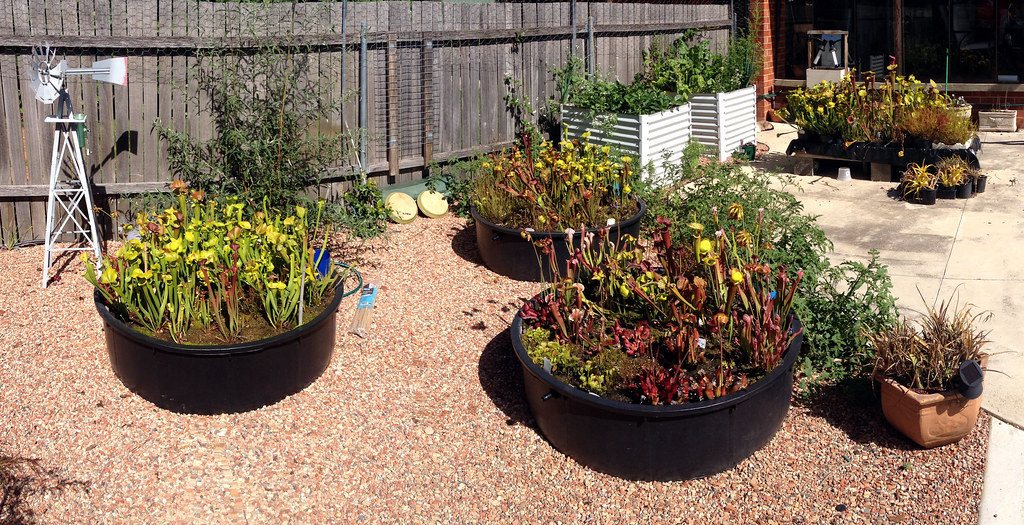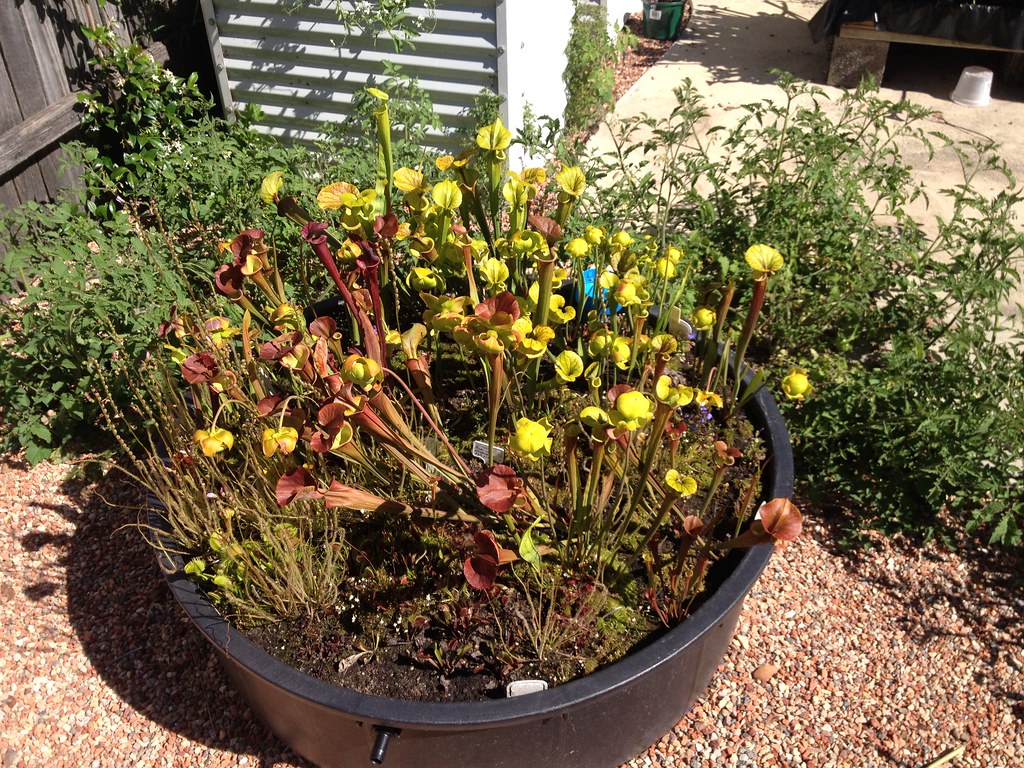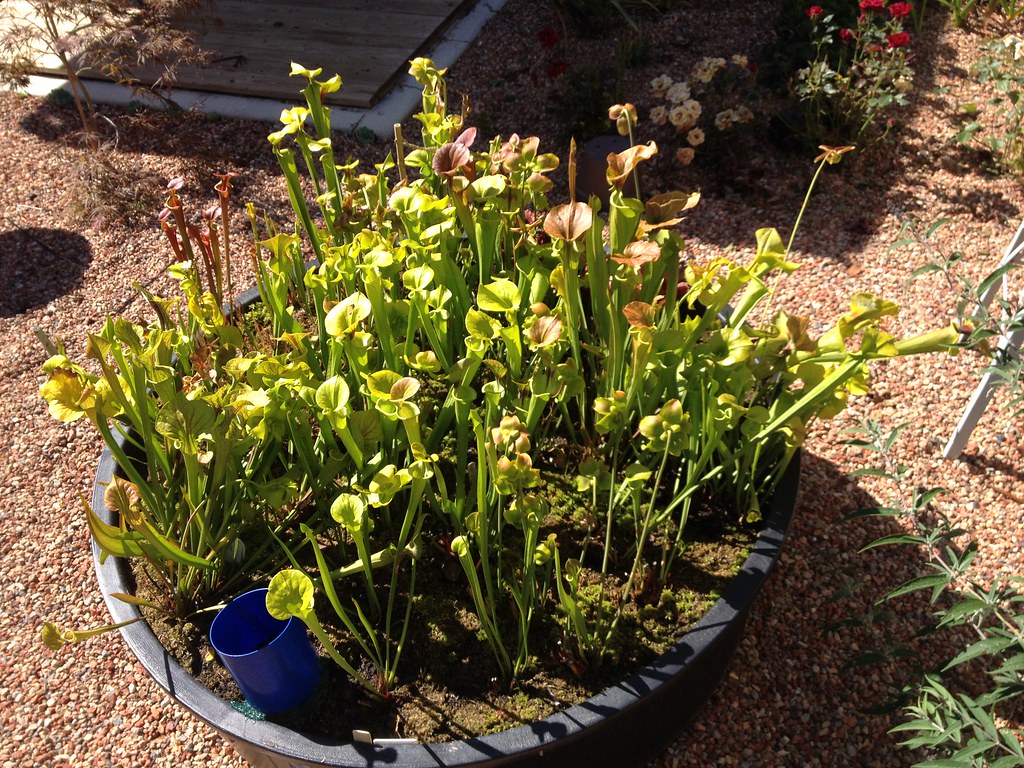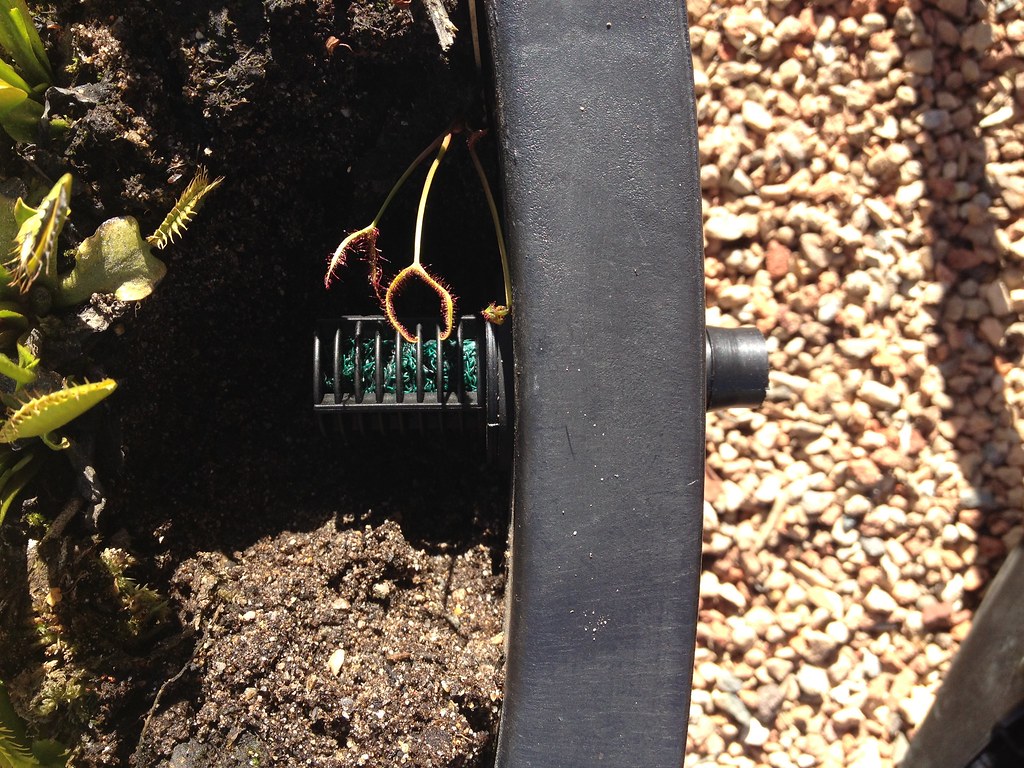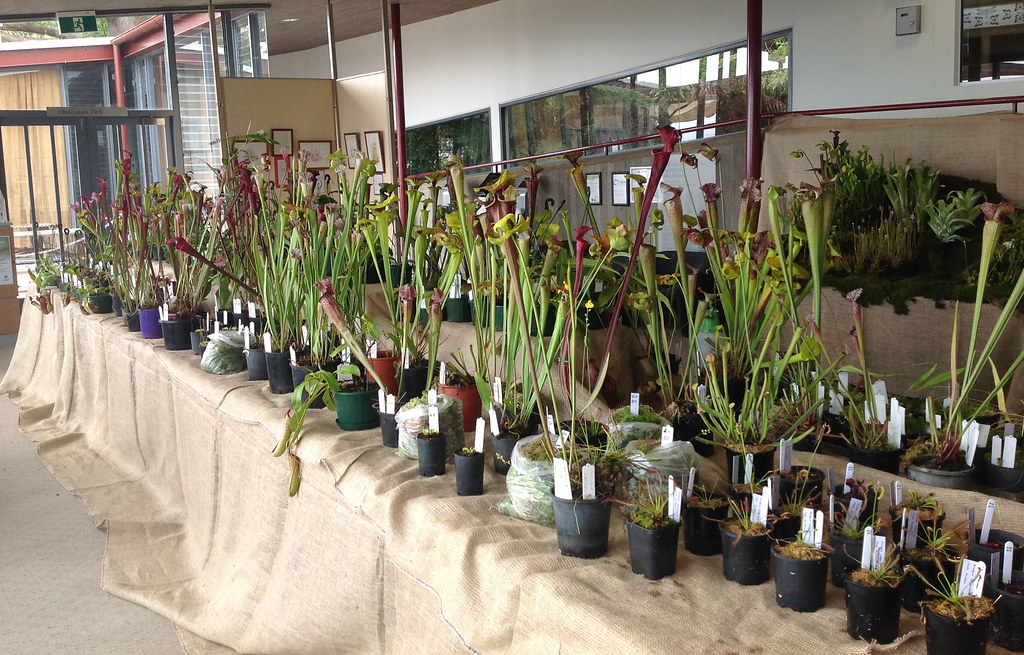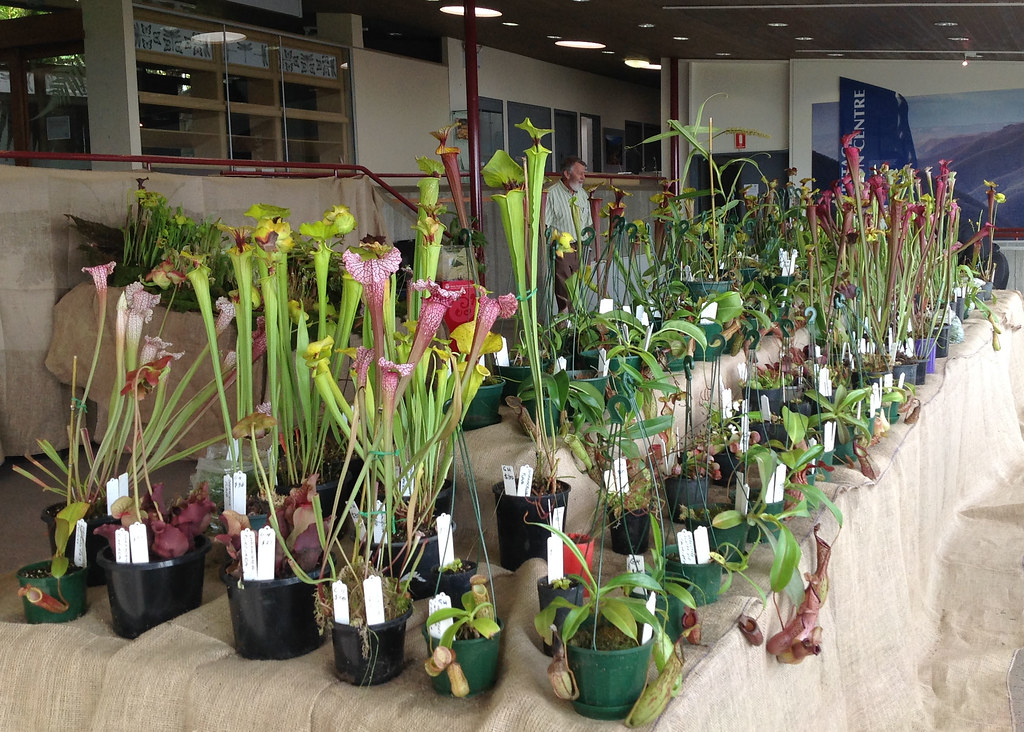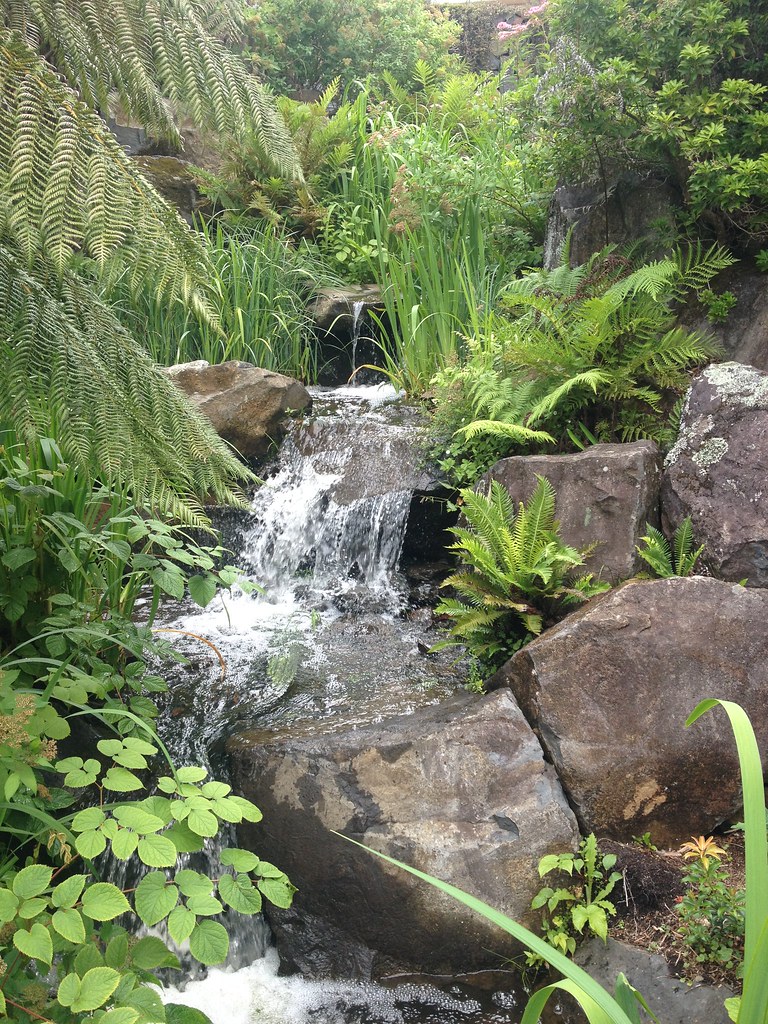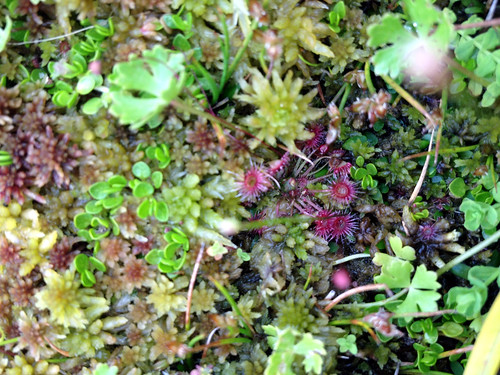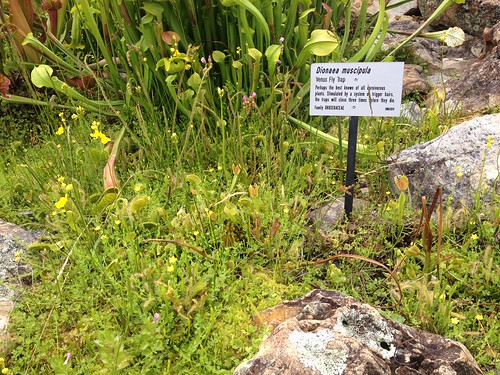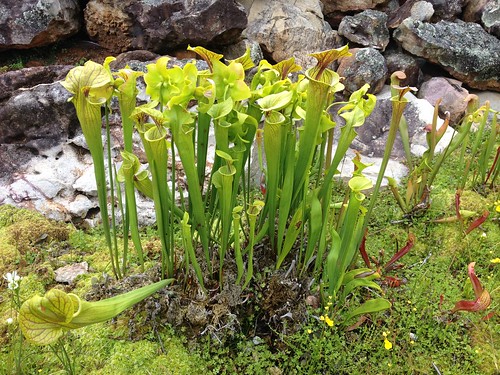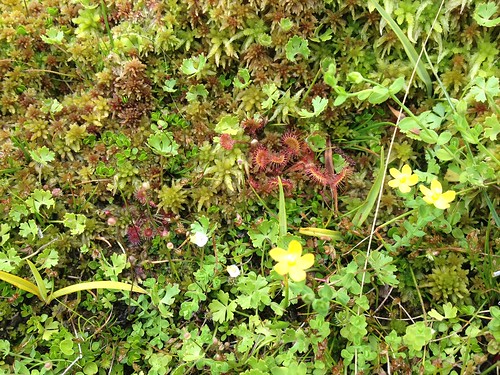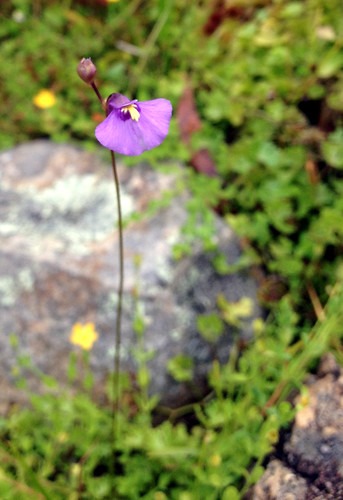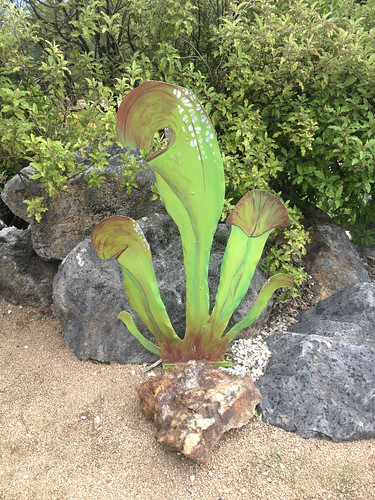That’s right! I am turning my collection into a bog garden! Please note this post is a work in progress, so for longevity, I will be adding a lot more photos as the build progresses.
*******************************************************************************************
So, here was where we were at the other week. I had brought some ponds and was thinking of setting up my potted Sarracenia collection in them as a hybrid potted-bog garden-pond-with-fish arrangement.
Last weekend, I set about measuring up the new ponds for how many pots they could take, how to arrange the pots for optimum light exposure, and looking at what fish would be best for mosquito control. A problem kept on coming up – in order to maintain a half decent collection of plants, the distance between the pots would be too small to allow me to keep fish in there. The downside – the ponds would provide a perfect breeding spot for mosquitoes. In the end, it was obvious that doing away with pots completely and using the ponds to make a bog garden was the solution.
I used to grow Sarracenia in bog gardens in Queensland and, despite breaking three key rules at different times (eg. concrete pond, unwittingly using sedge peat – which is alkaline, and too shady a spot) the plants thrived and were a feature of the garden that people always marvelled at. There are numerous examples of successful bog gardens on the web, with Carl Mazur’s blog my favourite (and an ongoing source of inspiration).
So, here are my experiences in setting up a bog garden, and photos of how it actually looks.
Container choice is important. I used reinforced plastic ponds 110 cm wide (44” or 3.66 feet) and 34 cm deep (nearly 14”), but you can also use pond liner (excellent unless you have trees with invasive roots or grasses like couch). There are lots of tips for laying pond liner or installing ponds into the ground on the web, so I won’t repeat that side of things here. But make sure you keep the size manageable – try to keep the width less than twice your arm length for ease of access. I would suggest allowing no more than three plants deep, with a generous allowance between each plant to allow light penetration. As you can see in the above photo, three deep Sarracenia block out a lot of light! The bog may look open at first, but it will grow in, especially if you add plants like Drosera and VFTs (which you should – they enhance the appearance greatly). Sarracenia, if planted well, will form clumps that will get much bigger than you would expect – if you are patient of course! You will eventually have to divide and thin out the clumps, but the longer between disturbances the better you plants will be for it. Of course, you will have to be more diligent in checking for rhizome problems too.
As they say in real estate, position is everything. Bog gardens are hard to move once set up (done this twice in my life with family help – not fun!), so make sure you position it so it will get full sun from early Spring onwards, at least 6-8 hours per day. I have got away with a lot less (my last bog was relegated to a relatively poor position underneath a huge Acacia tree and got about 4 hours!), but you will notice the difference if you give it the extra light. Carnivores forgo photosynthesis efficiency through using their leaves as traps, so they need as much light as they can get.
Substrate choice and design is important, and a lot more complex than you may think. A critical aspect of bog design is providing a reservoir of water that is accessible to the plants. The larger you make the reservoir, the more stable your bog will be, and the better your plants will grow. Make sure you allocate about half the volume of the pond as a reservoir. The volume and size of such a reservoir means it is very hard for the peat layer to dry out. I have found using a layer of gravel to be ideal for this purpose, with a perforated ag-pipe laid in the bottom so it forms a spiral to ensure even water distribution through this layer. The gravel also allows Sarracenia roots to grow through into the reservoir level, drought proofing your plants for as long as possible. I made the gravel layer about half the total height of the pond – 15 cm. This provides a reservoir of 140 Litres with 190 Litres of growing substrate on top. It will take a lot to dry this up entirely, giving you more than enough opportunity to correct any oversights. I also plan to insert a mesh basket of 200 mm (8”) diameter into the centre, allowing the peat moss to have continual contact with the reservoir.
As my ponds are 34 cm (just under 14”) deep, a 15 cm deep gavel layer leaves 20 cm for peat. Incidentally, 20 cm is about the right depth for Sarracenia roots; others have found through trial and error that anything taller is inefficient use of peat, especially in a tray system. Besides, the gravel will allow Sarracenia roots to penetrate if they do get much bigger.
As for the ag pipe, one end is oriented so it is vertical and is open to the surface, allowing water to be added via a hose. I sacrificed a plant label so that its stem pokes through the perforations at a height about 30-40 mm (nearly two inches) above the gravel, which is the ideal water level. As the label is white, it can be seen easily if you look down the tube and serves as a fill marker. If the label stem is exposed, water is needed.
When choosing the gravel, you need to use a proverbial acid test to make sure you get the right type. If you use something alkaline, such as crushed brick and concrete, or limestone, it will buffer or resist pH changes. In practical terms, an alkaline gravel will destroy the acidity of the substrate you use, potentially burning the roots of your Sarracenia as nutrients normally tied up by the acid is released. The acid test is simple – take a glass jar and some vinegar or another dilute acid to the landscaping yard. I used an acid-based tile cleaner, which smelled like acetic acid. Pour some into the glass jar (being careful not to get the acid on you – gloves are recommended) and drop in samples of each gravel. If bubbles fizz off the gravel, it is alkaline and unsuitable for use. I ended up getting blue metal gravel, which is crushed granite. It has worked well for me before.
So here is everything set up before the gravel went in. I used a trailer to get my gravel from the landscaping yard – $15 total. Before shovelling it into the bog, I washed it off thoroughly to get rid of as much contaminating dust as possible.
Here is the first few shovels of gravel going in to garden # 2. While seting up the first garden, I found it convenient to use the first shovel loads to secure the ag-pipe in the middle of the pond, and then used further shovel-loads to ensure the pipe is reasonably evenly distributed. I had the technique down pat for the second try.
And here the bog is with the gravel layer filled and smoothed. Note the ruler for depth and the ag pipe extending to the surface.
And that’s where the project finished on Sunday night. As the Stark family says, Winter is Coming (at least it is here in Australia), and as it is getting very cold in the evenings, I will have to down tools until next weekend. I will keep you posted on progress with as many photos as possible.
